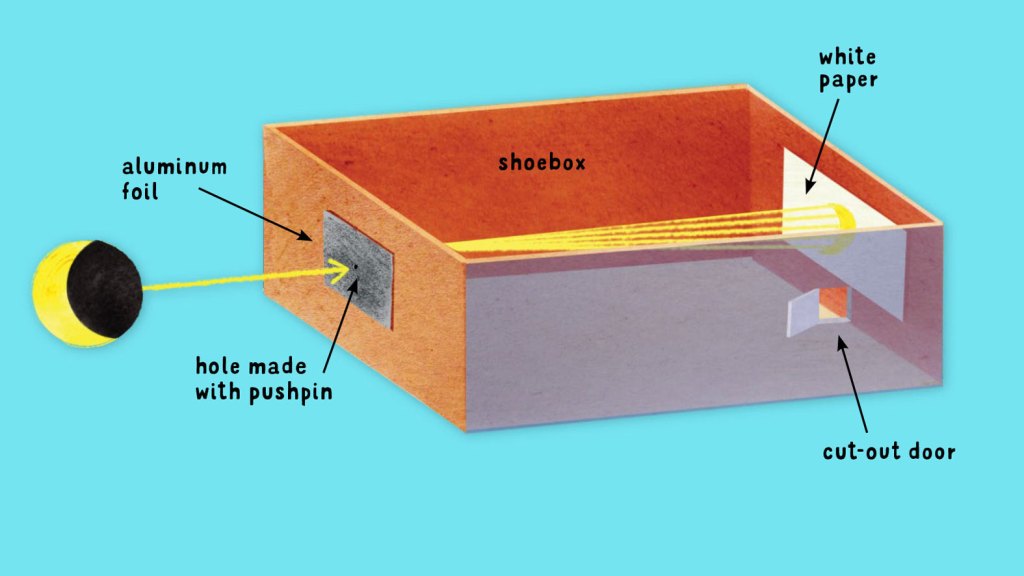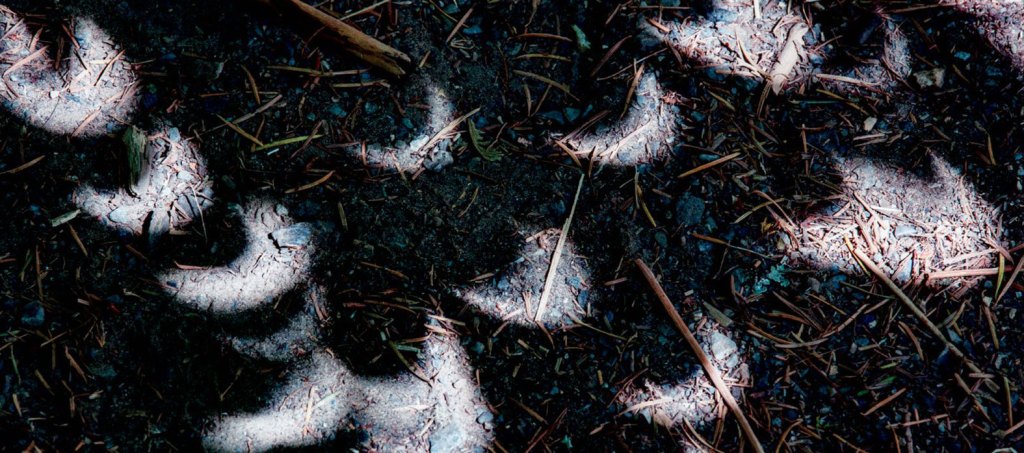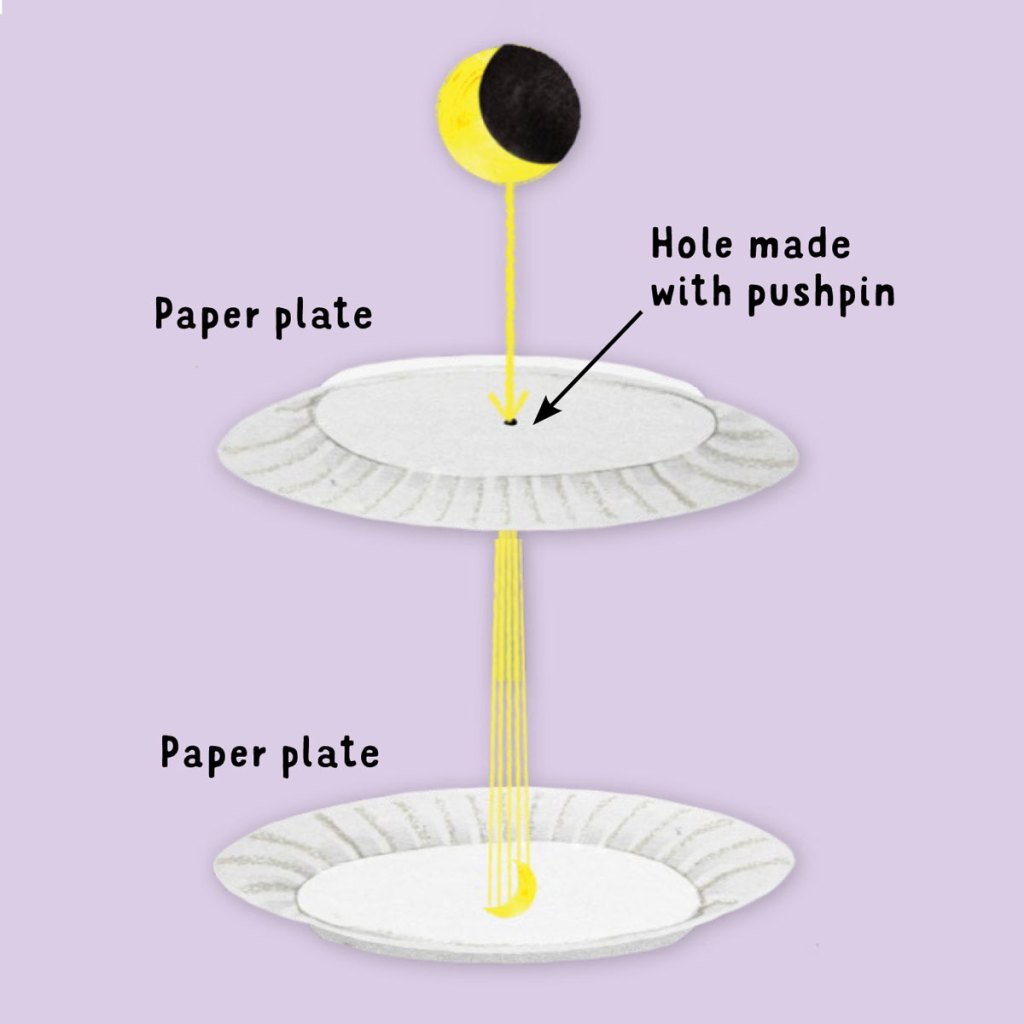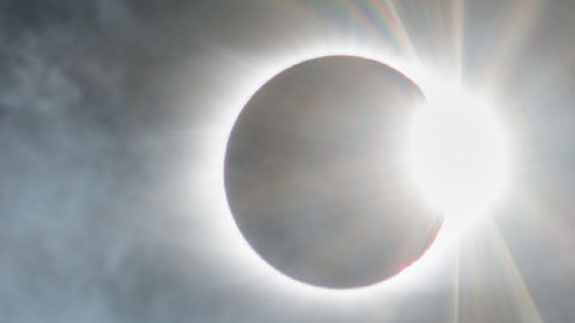Make a Pinhole Projector
Sky Gazing author Meg Thacher shares two DIY eclipse pinhole projector projects that you can make at home.
One way to observe an eclipse is to use a pinhole projector to make an image of it.

You will need:
- Scissors
- Sheet of plain white paper
- Tape
- Shoebox with lid
- Aluminum foil
- Pin or thumbtack
What to do:
- Cut out a rectangle of white paper and tape it to the inside of one end of the box.
- On the other end of the box, cut out small square that is about 1 inch by 1 inch (2.5 cm by 2.5 cm).
- Cut a piece of foil that is 2 inches by 2 inches (5 cm by 5 cm). Poke a tiny hole in the center of the foil with the pin.
- Tape the foil over the square hole in the box.
- Cut a door in the side of the box so that you can peek in and see the white paper screen.
- Put the lid on.
To use the projector, stand with your back to the Sun and put the box on your shoulder, with the pinhole facing the Sun. Don’t look through the pinhole at the Sun! Peek in the box through the door. Turn the box until you can see an image of the Sun on the white paper screen.
You can use any box for this project, or a poster tube. The longer the box is, the larger the image of the Sun will be. Make sure your box is nice and dark on the inside. You can use your pinhole projector to view a solar eclipse or even very large sunspots. The image will be too small to see fine details on the Sun.

Have you ever noticed that when you sit under a shady tree, there are little circles of sunlight on the ground among the leaf shadows? If you look under a leafy tree during an eclipse, you’ll notice that those circles are now crescent shaped! The spaces between the leaves act as pinholes and form images of the eclipsed Sun on the ground.
A Simple Pinhole Viewer

A much simpler pinhole projector can be made from two paper plates. Poke a tiny hole in one plate, and hold it above the other. The pinhole will make an image of the Sun on the bottom plate.
Excerpted from Sky Gazing © Meg Thacher.
This captivating book offers a tour of our solar system and deep space, explaining how objects like Earth’s moon were formed and introducing the “why” behind phenomena such as eclipses, northern lights, and meteor showers. Sky gazers will learn how to find and observe planets—no binoculars or telescopes required—and star charts will show them how to spot constellations through the seasons and in both hemispheres.
Activities include tracking the cycles of the sun and moon and observing the sky during daylight hours or on a cloudy night. Includes profiles of professional astronomers and sidebars on space technology and current issues, such as light pollution.










